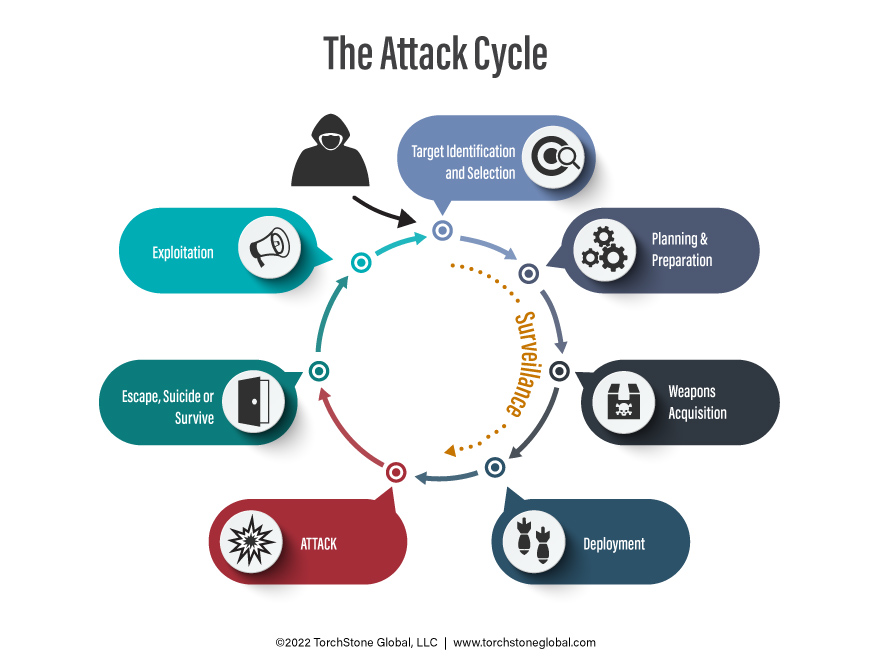
Kidnapping Part 3: Express Kidnapping
By TorchStone VP, Scott Stewart
As the American woman walked down the street in Rio de Janeiro’s upscale Copacabana neighborhood, she was careful to watch for potential threats.
She knew that Rio had a significant crime problem and did not want to become a victim.
As she walked past the two young kids standing in a doorway, she did not consider them threats—until one of them stuck a knife in her back and the other waived a razor box cutter in her face.
After a few seconds that seemed like an eternity, a gypsy cab pulled up to the curb and an armed man jumped out.
He and the pair of miniature criminals pulled the terrified woman into the back of the cab and sped off.
The man menaced the victim with his gun and quickly relieved her of her purse, jewelry, and phone.
He threatened to pistol whip her unless she gave him the pin number for her bank ATM card and corporate credit card.
She complied.
She was dumped on a dimly lit side street in one of Rio’s many favelas after being driven to a series of ATMs to reach the daily withdrawal limit of her two cards.
Left with no phone, no money, and no shoes in a strange place where she did not speak the language, the stunned woman finally found a bit of luck when a bystander took pity on her and allowed her to borrow a cell phone to call her hotel.
The hotel operator arranged her safe return to the hotel.
Fortunately, the woman had not been injured or sexually assaulted.
But she had just been the latest victim of an express kidnapping by one of Rio’s many criminal gangs.
Express Kidnapping Attack Cycle
Unlike a high-value kidnapping for ransom, which is a carefully planned crime with a long attack cycle, an express kidnapping is often a crime of opportunity with a relatively short attack cycle.
Express kidnappers are ambush criminals who tend to lurk near an attack site and then wait for a suitable victim to happen along.

Planning and preparation for an express kidnapping actually occurs before the target identification and selection phase of the attack cycle.
The amount of surveillance conducted on the victim is normally very limited.
Usually, it is just enough to identify the mark as someone likely to have enough money to make the kidnapping worthwhile and to determine if the victim is vulnerable to their ambush.
Often, express kidnappers will set up near an ATM on the street and attack a victim using the ATM.
They will also lurk near upscale hotels or shopping areas that affluent people and tourists frequent.
In some cases, they will set their trap near popular entertainment districts and prey on victims who have had too much to drink and are thus easy marks.
It is also quite common for express kidnappers to use gypsy cabs to pick up their victim and pull into an alley. An armed accomplice will then jump into the car to initiate the kidnapping.
But not all express kidnappings occur on the street.
In Colombia, it is quite common for victims in bars or nightclubs to be approached by an attractive person who will slip something into their drink and then usher the impaired victim out of the establishment and into the vehicle of the abductors.
It is also important to recognize that express kidnappings are not just something that happens in Mexico, Brazil, or Colombia.
While not common, express kidnappings are also conducted in areas generally considered to be “safer,” like cities in the United States and Europe.
Easy Returns
Express kidnappings are preferred by small-time criminals for several reasons.
Unlike long-term kidnappings for ransom, perpetrators generally do not need extensive infrastructure such as safe houses and round-the-clock guards.
Nor do they need to worry about providing meals and other long-term care for the hostage.
Express kidnappings offer a rapid return for their efforts since the bank account linked to the ATM card can be cleaned out in a few hours or a ransom quickly paid.
Holding a victim for such a short time also reduces the chances for law enforcement to track down and apprehend the perpetrators, and there is rarely a need to communicate with the victim’s family or arrange for a ransom drop.
Since express kidnappings are often carried out by less-professional criminals, victims can be at risk of suffering physical harm or being killed almost immediately, especially if something unexpected happens during the abduction that causes the kidnappers to panic.
Another danger, although quite rare in most places, is that the kidnappers will kill the victim even after the accounts are emptied or the ransom paid—rather than risk being identified later.
Evolution
In most cases, the victim of an express kidnapping is held only while their bank account is emptied.
However, because of bank card withdrawal limits, the perpetrators may be forced to hit several ATMs—sometimes as many as five or six in an hour.
These multiple withdrawals over a short time can sometimes trigger a security lockout of the card, causing the perpetrators to keep their victim and contact the family seeking a cash ransom, especially if the ATM transaction receipt shows a large balance in the locked-out account.
Gangs have been known to extend the confinement in order to keep cashing in on their victim in such cases with a large account balance and a small daily withdrawal limit.
Victims report being confined in the trunk of a car for several days while their accounts were being drained.
Express kidnappings also can morph into a more traditional kidnap-for-ransom abduction if the criminals discover the victim has significant financial assets.
Kidnappers may discover this when seeing more exclusive credit cards in the victim’s wallet or a business card that identifies them as a top executive of a well-known company.
In some cases, express kidnapping gangs have even been known to sell victims to other criminal groups that specialize in high-value kidnappings for ransom.
Avoidance
Kidnappings are an avoidable crime, and precautions can be taken to avoid becoming the victim of an express kidnapping, whether at home or while traveling.
Since taxi drivers often are used by express kidnapping gangs to procure victims, gypsy taxis—those not affiliated with a reputable company or hotel—should be avoided.
Whenever possible, use a trusted and reliable transportation provider.
If you must use an ATM, choose one that is located in a secure location with good security, such as at an airport, bank, hotel, or upscale shopping mall, rather than a machine located on the street.
People should always practice a heightened level of situational awareness whenever they are using an ATM, no matter where it is located.
(Pay close attention to indications that ATM skimmers or shimmers have been installed on the ATM machines, even in upscale locations—but that is a topic for another piece.)
To minimize loss during an express kidnapping, people should consider carrying an ATM card that is linked to an account with limited funds rather than one linked to both checking and savings accounts containing much larger amounts.
Generally, the sooner the money in the bank account runs out, the sooner the victim will be released.
Like any other crime conducted by an ambush criminal, the best way to prevent an express kidnapping is simply to avoid the ambush point.
Gather good granular intelligence about where, when, and how criminals operate in a specific area and use that information to avoid potential ambush sites and tactics.
Many express kidnappings can also be avoided simply by avoiding seedy nightclubs and bars where one can come into contact with the criminal element.
These areas are especially dangerous late at night and for people who have been drinking heavily.
Very little good can happen to an intoxicated person on the street in a red-light district at 3:00 am.
People must also be very careful accepting drinks from individuals they don’t know and should never leave their drink unattended.
Situational Awareness
Situational awareness is also a critical tool for avoiding express kidnapping and other types of crime.
Quite often, the demeanor of ambush criminals will betray them before an attack.
I have interviewed countless crime victims who said that they noticed something “off” or “wrong” with their attackers before they were accosted but that they decided to ignore those feelings rather than take measures to avoid the potential threat.
In many cases, they paid a steep price for this denial.
I encourage people to pay attention to their instincts and trust their gut when they think they sense a dangerous situation—even when they can’t clearly articulate why.
Criminals normally prefer to wait for a more unsuspecting and vulnerable victim to come along than face a chase or struggle.
If a potential victim spots an ambush criminal and takes steps to avoid them, it is very common for the criminals to let that person go rather than pursue them.
Nevertheless, be prepared to dart to safety if necessary.
Carjackings can also frequently transform into an express kidnapping.
Awareness of carjacking indicators and an appropriate level of situational awareness and defensive driving measures can help protect against these sorts of attacks.
Escape
I am often asked about escape attempts: as a rule, I advise against resisting economically motivated crime.
The best way to escape is to avoid the situation in the first place.
But if the window for avoiding the abduction has closed, and the kidnappers have the victim dead to rights—like the knife in the back in the example above—it is better to comply and live than it is to struggle and risk being killed or seriously injured.
Any potential opportunity for escape should be carefully considered, weighing the possible physical consequences of a failed escape against the probable financial losses.
Is it worth being shot for a few thousand dollars?
Like during a high-value kidnapping for ransom, the most dangerous time for an express kidnapping victim is during the initial abduction when events are unfolding rapidly, weapons are being brandished, and tensions are running high.
If the kidnappers feel they are losing control, they could panic and unintentionally kill the victim on the spot.
Express kidnapping victims should be prepared to hand over their valuables at once.
A person’s stuff is not worth their life or even an extended hospital stay.
Hesitation or refusal to relinquish valuables could cause an already nervous express kidnapper to resort to violence.
This report is the third in a series addressing different types of kidnapping and their motivations. The first part of the series, Understanding Kidnapping Threats, introduces different types of kidnapping. The second part, High-Value Kidnapping for Ransom, discusses how the required complex planning can be an advantage. The fourth part of the series, Virtual Kidnapping, considers who the real victim is. The fifth part, Tiger Kidnapping, explains how victims are victimized again. The sixth and final part of the series, Crypto Kidnapping, centers on kidnappers who identify targets with large amounts of cryptocurrency.
